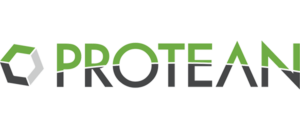Enhance safety, improve communication, ensure consistency, and increase efficiency.
Our Briefing solution further streamlines processes, provides real-time data, and supports comprehensive documentation, leading to shared, readily-accessible documentation and better outcomes.
Benefits of Briefing Software
Real-Time Communication and Updates: Enables real-time communication and updates, critical for dynamic working environments Provide real-time data on weather, air traffic, and other critical information.
Efficiency: Automates data collection and presentation, saving time and reducing manual errors.
Accessibility: Information can be accessed remotely by team members, facilitating better preparation and communication.
Integrated Data: Provides comprehensive access to patient records, lab results, and treatment plans.
Alert Systems: Can alert healthcare providers to critical issues or changes in patient status.
Documentation and Compliance: Ensures all briefings are documented, aiding in compliance with healthcare regulations. Keeps a record of all briefings, which is essential for audits and reviews.
Centralized Information: Provides a centralized platform for all mission-related information and updates.
Task Management: Assists in task allocation and tracking, ensuring all mission aspects are covered.
Data Analysis: Analyzes past missions and briefings to identify patterns and improve future mission planning.
Benefits of Briefing (General)
Standardization: Briefing ensures that all team members receive the same information, reducing the chances of miscommunication.
Situational Awareness: It helps pilots and crew understand the current weather, aircraft status, flight route, and potential hazards, enhancing situational awareness.
Risk Mitigation: Identifying potential risks and discussing mitigation strategies improves safety.
Coordination: Ensures all team members are aware of their roles and responsibilities, fostering better teamwork and coordination.
Patient Safety (Benefits of Briefing)
Consistency in Care: Ensures all healthcare providers are on the same page regarding patient care plans.
Error Prevention: Discussing potential risks and complications helps in preventing medical errors.
Improved Communication: Enhances communication among the healthcare team, leading to better coordination and patient outcomes.
Role Clarity: Clarifies roles and responsibilities, reducing confusion and overlap in patient care.
Mission Planning (Benefits of Briefing)
Objective Clarity: Ensures that all team members understand the mission objectives and goals.
Risk Assessment: Helps in identifying and discussing potential risks and how to mitigate them.
Resource Allocation: Facilitates the discussion of resources needed and their allocation.
Team Coordination: Promotes better coordination and understanding among team members, enhancing mission effectiveness.
